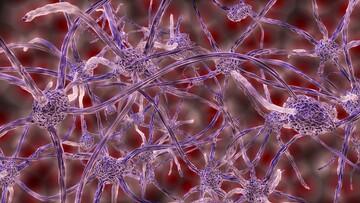What is a cell?

Nerve cells have specialized functions in cellular communication.

Nerve cells have specialized functions in cellular communication.
A cell is the smallest unit of life. It is like a tiny building block that makes up all living things, from plants and animals to bacteria and viruses.
The main parts of a cell are the cell membrane, the cytoplasm, and the nucleus. The cell membrane is like a wall that surrounds the cell and protects it from its surroundings. The cytoplasm is the jelly-like substance inside the cell that contains all the cell's organelles. The organelles are like tiny organs that do different jobs in the cell. The nucleus is the control center of the cell and contains the cell's DNA.
Cells do all the things that living things need to do to survive. They take in food and water, break it down for energy, and get rid of waste. They also grow and reproduce. Cells are constantly working to keep the body healthy and functioning.
Cells work together in groups to form tissues, organs, and organ systems. For example, your skin is made up of many different types of cells that work together to protect your body from the outside world. Your heart is made up of muscle cells that work together to pump blood around your body. And your brain is made up of nerve cells that work together to send messages all over your body.
Cells are amazing little things that are essential for life. Without cells, there would be no plants, animals, or people. So next time you look at a tree or an animal, remember that it is made up of billions of tiny cells working together to keep it alive.
How do cells reproduce?
Cells reproduce through a process called cell division. It's like when a piece of paper is folded in half and then divided into two pieces. Cells divide to make new cells, just like how you can make more paper by folding it and cutting it into smaller pieces.
The process of cell division has two main steps. First, the cell's DNA, which is like its instruction manual, is copied. This ensures that each new cell will have all the information it needs to function properly. Imagine making a copy of a recipe so that two people can each bake a cake.
Then, the cell splits into two new cells. This is called mitosis. It's like when you have a full glass of water and you pour it into two smaller glasses. Each new cell gets a copy of the DNA and other important materials from the original cell, so they can both grow and do their jobs. It's kind of like twins being born from one parent!
This process of cell division allows living things to grow and repair themselves. When you scrape your knee, special cells in your body divide to make new cells that fill in the scrape and help it heal. Just like how a broken toy can be fixed when its parts are replaced, cells divide to fix and replace damaged or old cells.
So, cells reproduce by making copies of their DNA and then dividing into two new cells. This helps us grow, heal, and stay healthy!

Nerve cells have specialized functions in cellular communication.